The Nissan March Rumba was sold alongside the Bolero. So today in the March-athon series we’re covering everything about the Rumba and comparing it against the Bolero. But first something else. I was wondering if ChatGPT could outdo itself and make an even better joke about the March Rumba:
Why did the Nissan March Rumba refuse to dance?
Because it didn’t want to “auto-mambo” and preferred to keep its moves in “park-ison!”
Yes, ChatGPT definitely outdid itself!
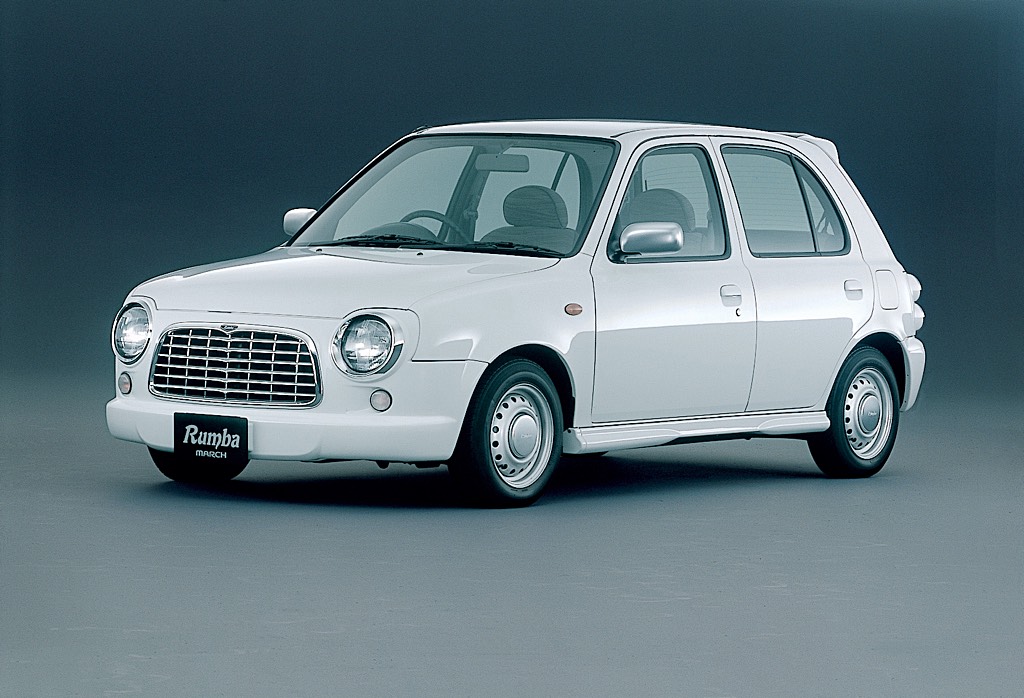
What’s a Nissan March Rumba?
As you may have guessed from the introduction and the photos, the Nissan March Rumba is a retro-styled variant of the Nissan March. It became available from November 1998 onwards and was, alongside the Bolero, for sale until the end of the K11. Similar to the Tango and the Bolero, the Rumba is also a musical style (and dance) and this fits in within the March’s musical note lineup.
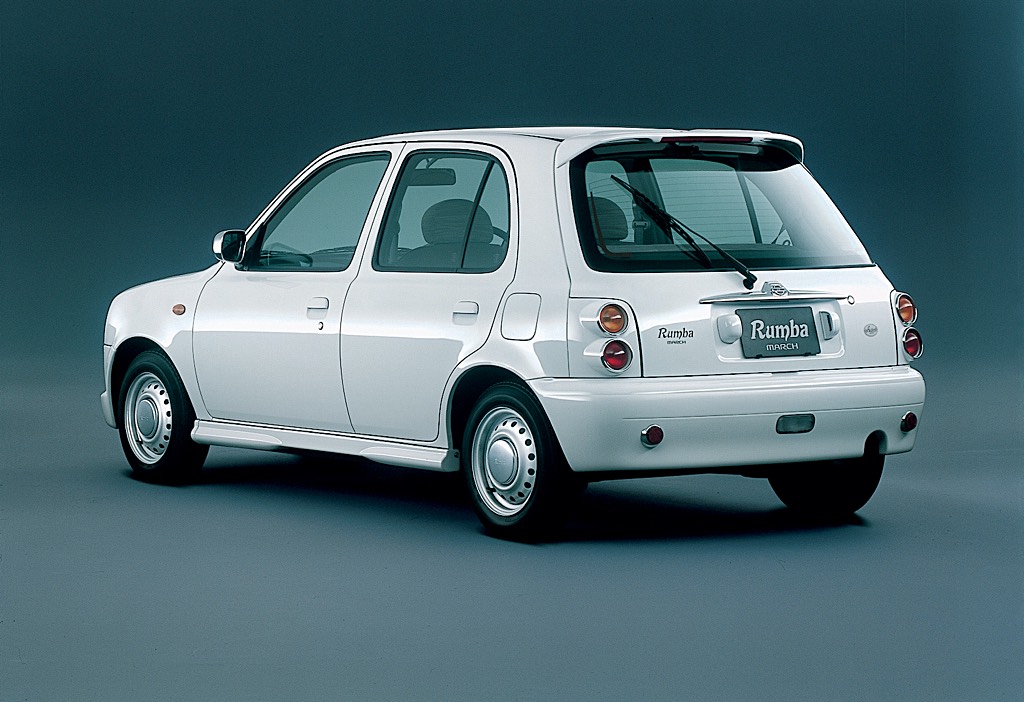
Similar to the Tango and the Bolero, the Rumba was also assembled by Nissan’s Autech division. So there are a lot of similarities and that’s because Nissan was just doing rinse and repeat on these specials.
Retro-inspired
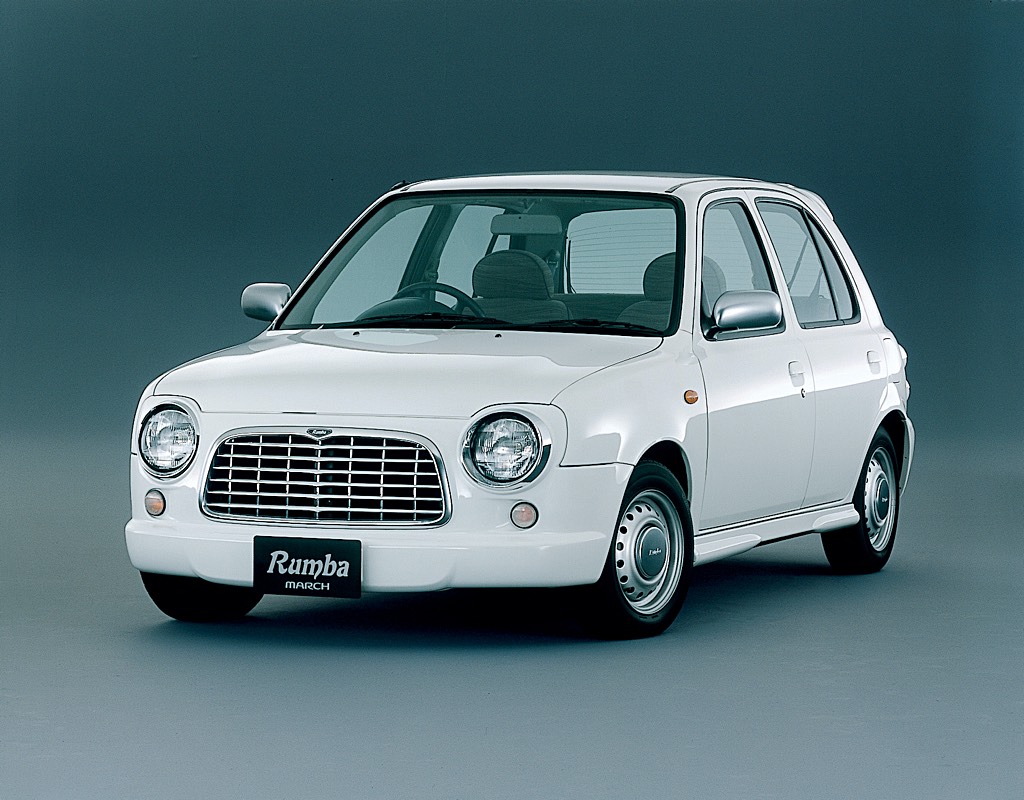
Similar to the Bolero and Tango, the Rumba was also retro-inspired. However, the Rumba had less extravagant styling than the Tango and Bolero. In its way, it was way more conservative than its counterparts. In contrary to the Tango and Bolero, the Rumba feels more British.
The front looks like a blend between the Austin Mini and the first-generation Austin 1100/1300 (ADO16). The grille looks like the Austin 1100/1300 and the side indicators are typically Mini. The Rumba appears to share the headlight and tail light design with the Bolero. Perhaps this was done to save cost or avoid additional approval from the health and safety inspection.
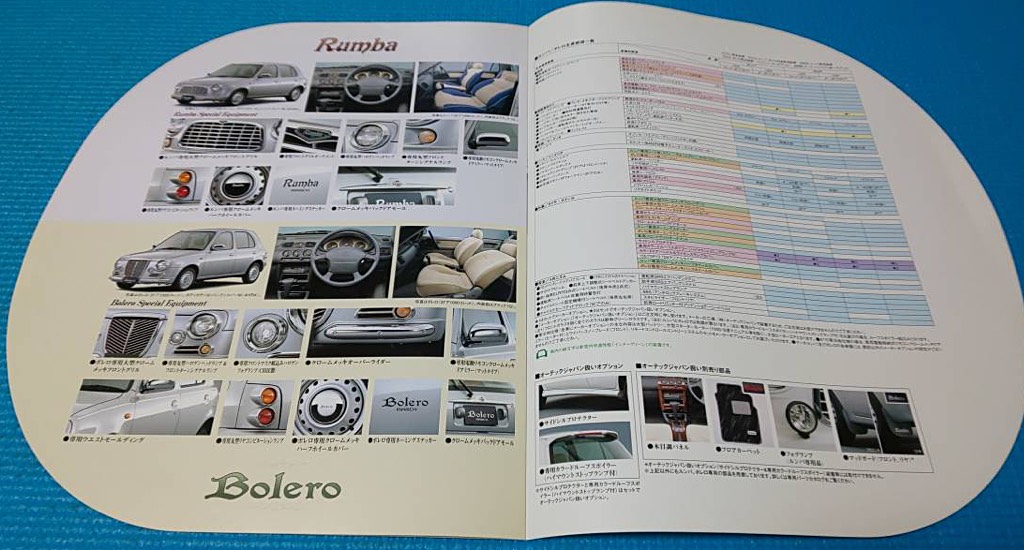
The Rumba has way less chrome than the Bolero. It only features chrome on the headlamp surrounds, grill, door mirrors and centre caps. The centre caps appear to be shared with the Bolero as well and, naturally, feature the Rumba logo printed on them instead of the Bolero logo.
Interior
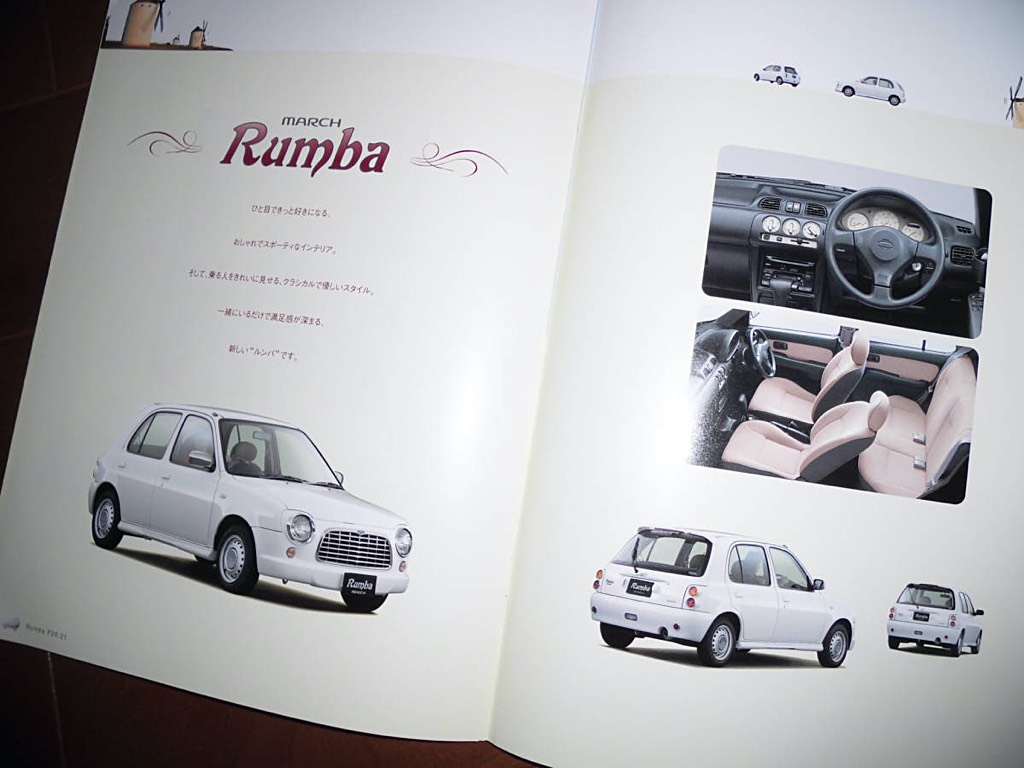
Where the Bolero features a Chic, Classy and Luxurious British-inspired interior, the Rumba features a Sporty and Modern interior. No wood grain dashboard and wheel inserts. No high-quality interior coordinated with wood grain and beige. The dashboard was typically 1990s black plastic and the seats featured contrasting blue-coloured bolstering.

The interior changed a year later in November 1999 to a striped tan fabric. In the final year for sale, its interior once more changed to a simple beige fabric and it now featured chromed air conditioning controls. It’s like Nissan couldn’t make up their mind about the interior of the Rumba!
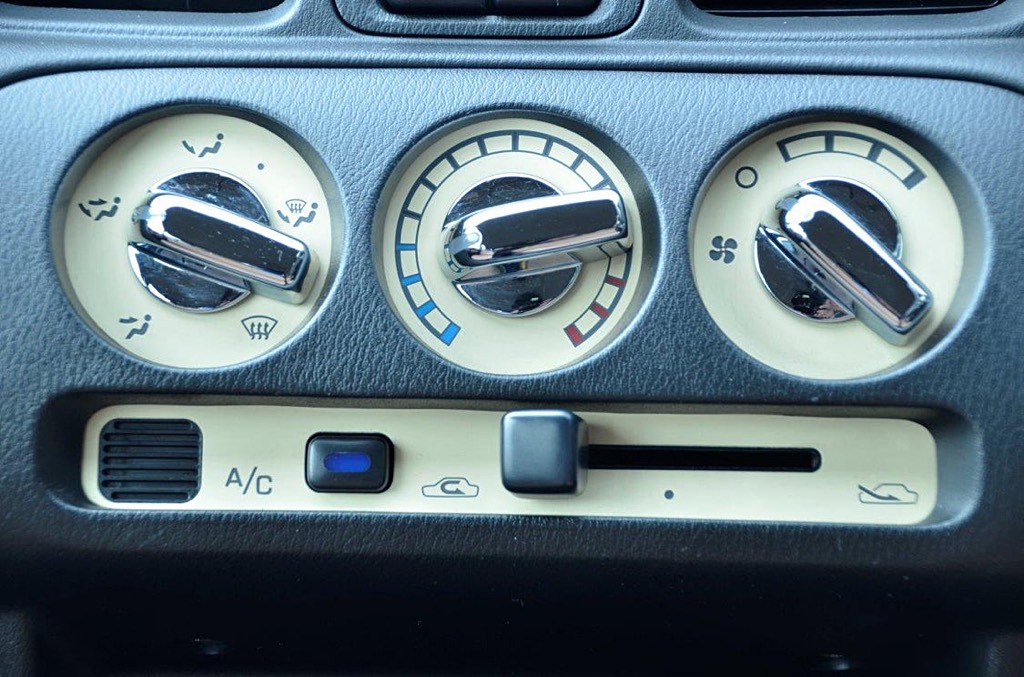
A Sporty and Modern interior is also what we associate with the Austin Mini, Austin 1100 and the later Austin 1300 GT. I think this is also the way Nissan intended the Rumba: as a classic sporty retro car.
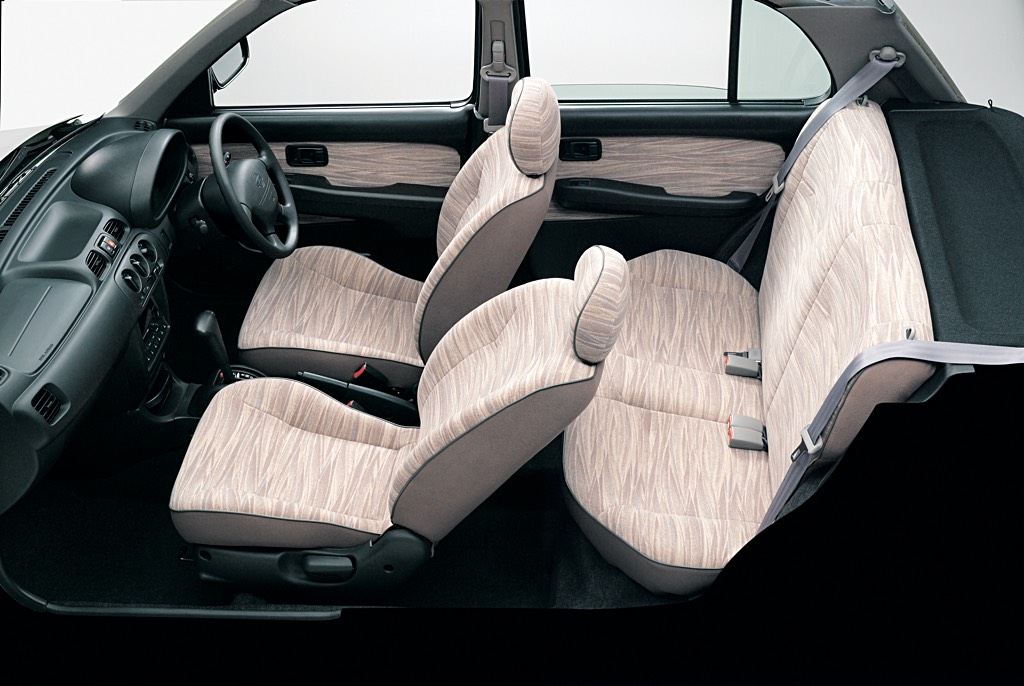
Body shape and colours
Just like with the Bolero, there was a choice between any model within the range: two- and three-door, manual and automatic transmissions, but also 1.0 litre and 1.3 litre engines. The Rumba came also with the same options standard: it came fully decked out with power steering, air conditioning, power windows and ABS.
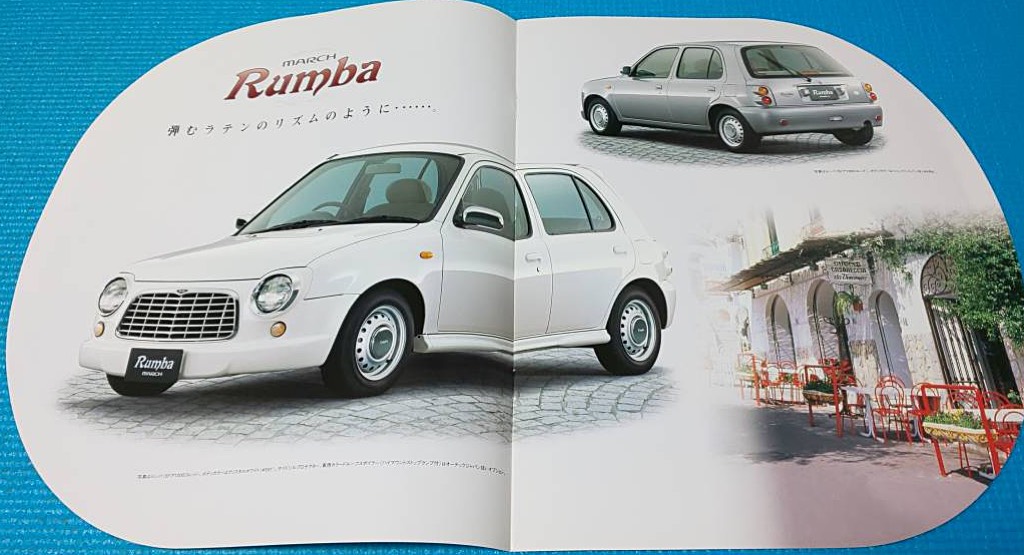
Similar to the Bolero, the pre-facelift Rumba was only available in Sonic Silver (KR4) and Super Black (KH3). After the facelift, the Super Black was swapped out in favour of Polar White (QM1).
Sales
As the Rumba was introduced a year after the introduction of the Bolero, you will find less of them as it was only for sale between November 1998 and December 2000. The Rumba looked less retro than its Bolero sister model, which also might have made less sales. I was able to find a total of three for sale on Goo-net and I think that’s a fair representation. All of those are low mileage and they probably had equal use as the other retro-inspired cars.
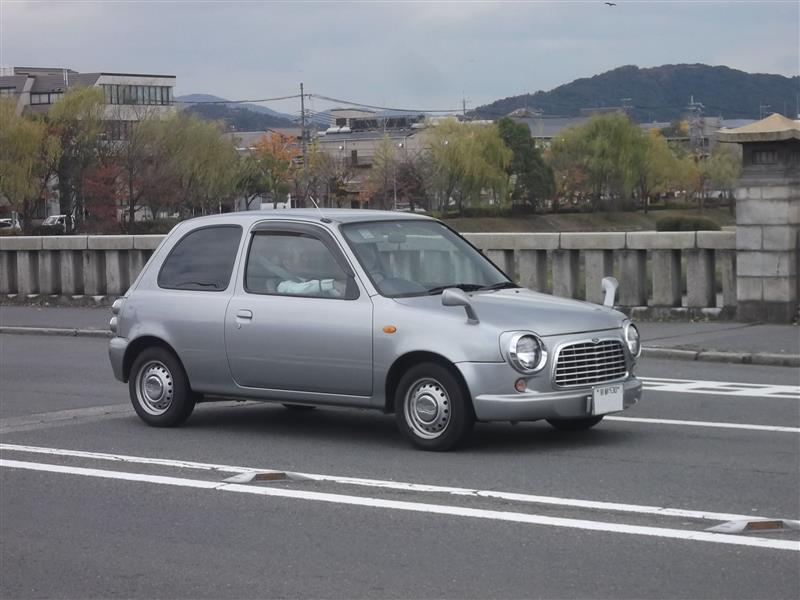
If you search a bit beyond Goo-net, you will find more for sale online and also little gems like the March Rumba above with aftermarket installed fender mounted mirrors. They didn’t come with these mirrors from factory and they weren’t even a dealer option. But I hope you agree with me they suit the car much better than the chromed door mounted mirrors!
Conclusion
Just like the Tango and Bolero, the Rumba wasn’t much more than a dressed-up March. No technical improvements were made and compared to the G# or Autostrada trim levels and the interior was, apart from the strange seats and later chromed aircon controls, bone stock. The Rumba was targeted towards a certain lifestyle: that of the same classy people as who would like to buy a March Bolero. The people who like to drive a small commuter car with a retro design, but loathe the wood grain interior of the Rumba. Yes, it totally doesn’t make sense to canibalize the sales of the Bolero for that! However, I must add that I personally would favour the Rumba over the Bolero. So I do understand Nissan’s decision on this subject.
Next time I’ll cover the Nissan March Polka, the final of the quartet of retro-inspired cars by Nissan. But that won’t be the end of the March-athon as after that, there will be even more special models and variants of the March.
All photos in this post are either Nissan press photos, photos of March K11 brochures, cars for sale on Goo-net and Ameba, plus one photo found on Minkara
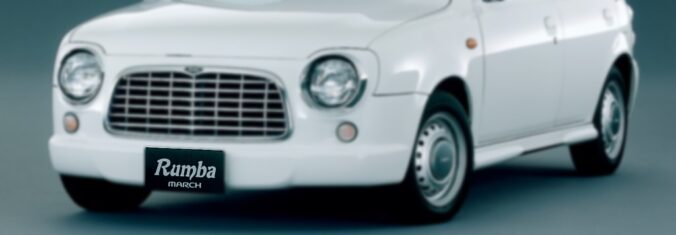
Leave a Reply